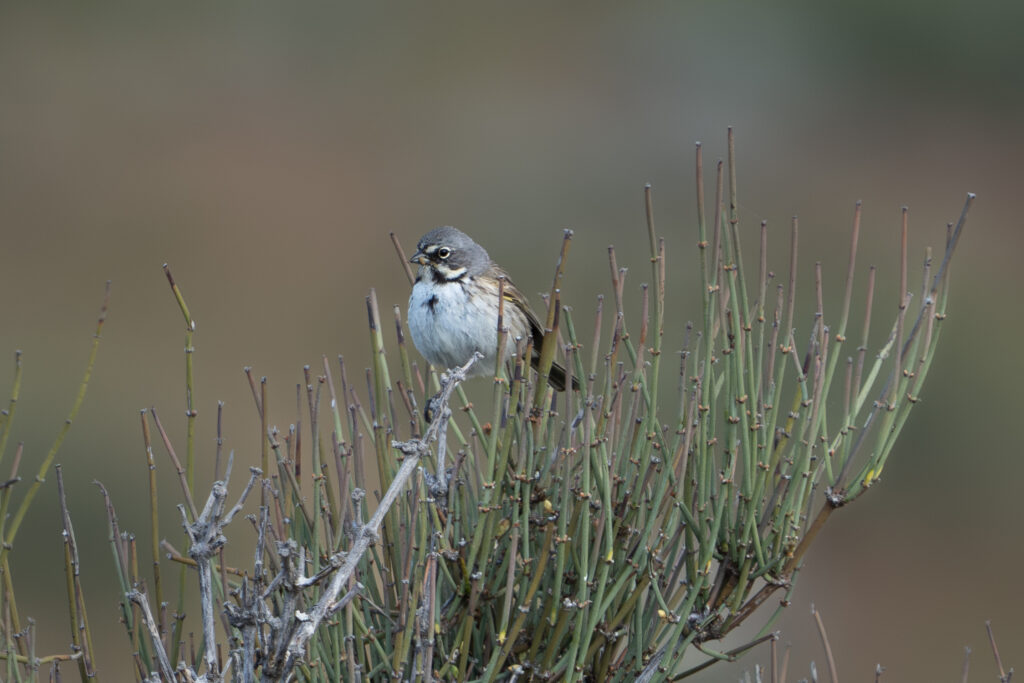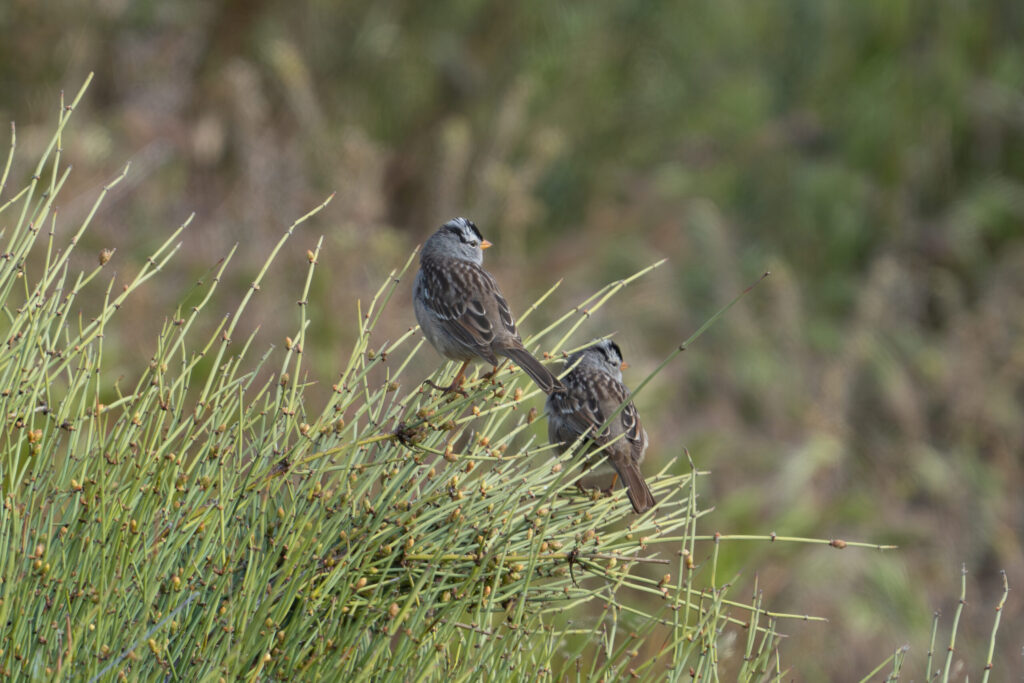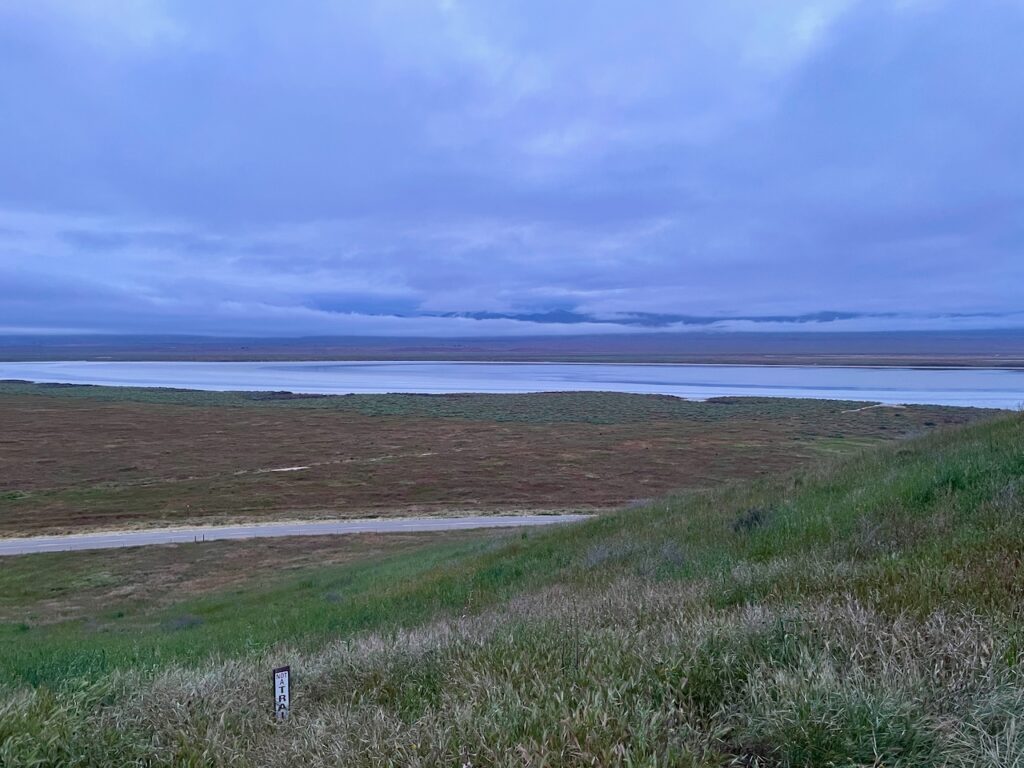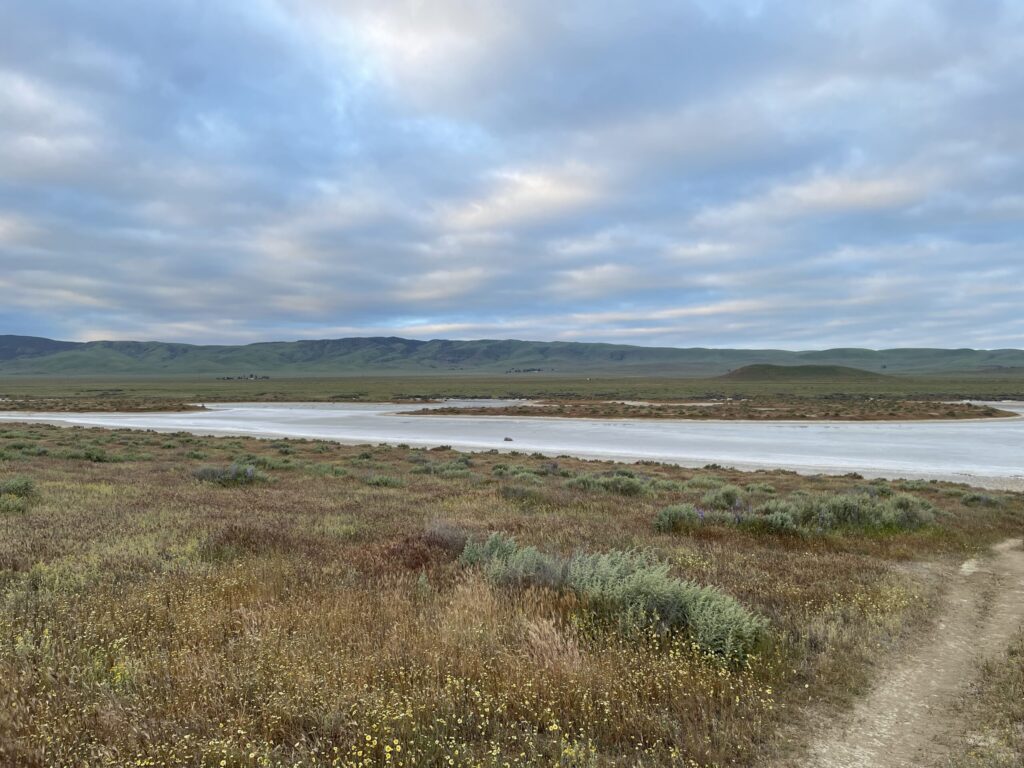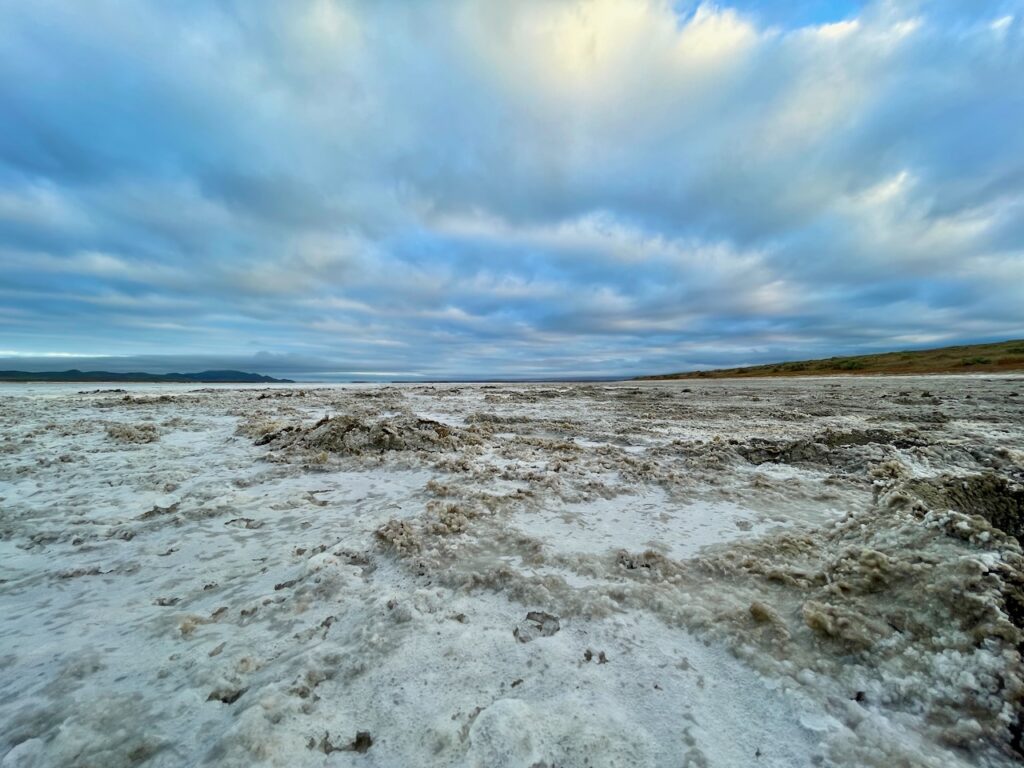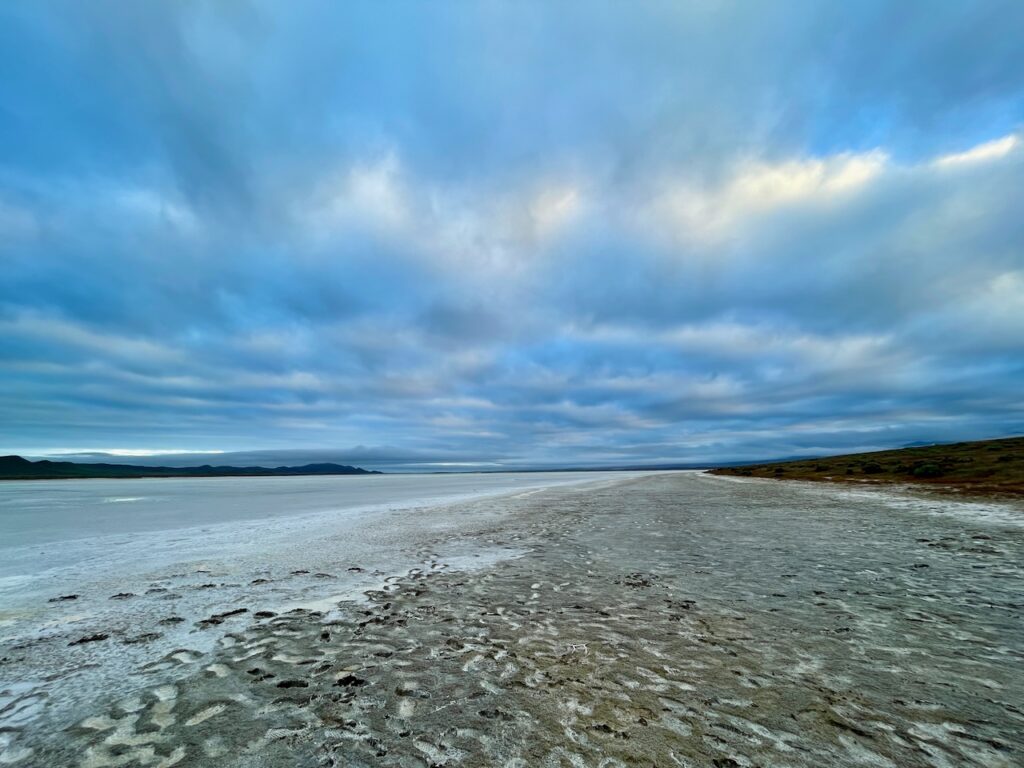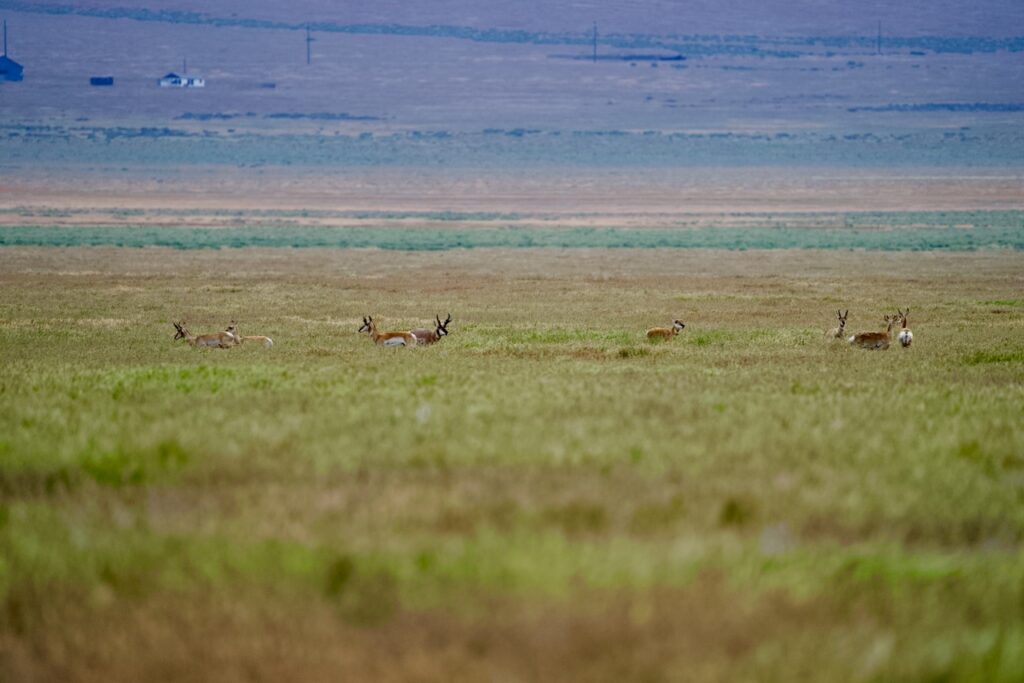I went out to Carrizo Plain again to explore a bit more this past Saturday–take a few more dirt roads, enjoy the smaller crowds now that the possibility of a second consecutive super bloom has disappeared, see what I can find. (The flowers were nice this year, but not as spectacular last year or previous “super” years.)
I saw a few birds on the trip, but not very many. I think the wintering birds have mostly departed. What remains are the resident breeders: Savannah Sparrow (not shown), Bell’s Sparrow, Lark Sparrow, Horned Lark, Western Meadowlark, the omnipresent Common Raven, etc. Here’s a little gallery.
When you drive in from the north, the way we always do (Highway 58 begins just a few miles south of our house, and it leads right to Soda Lake Road), one of the first places you get to is the hill overlooking Soda Lake:
For the first time this year I wandered up Simmler Road, which starts at the southern end of the lake and goes north along the eastern edge. The road was rutted but dry, so it was easy driving to the first main trail down to the lake surface.
On this trip for the first time, I saw the herds of pronghorn and elk that give this place the nickname California’s Serengeti:
They were so far away that even my 600mm lens couldn’t bring them into sharp focus, so I’m leaving the photos uncropped.
The antelope have been there since the late 1980s, according to a 2015 article published by the California Department of Fish and Game (now Cal. Dept. of Wildlife or CDW): the agency “translocated over 200 individuals in 1987, 1988, and 1990 from northeastern California to areas within and surrounding what is now the Carrizo Plain National Monument.” (Diego Johnson, Kathleen Longshore, Chris Lowrey, and Daniel B. Thompson in “Habitat selection and survival of pronghorn fawns at the Carrizo Plain National Monument, California”)
The Tule elk, “the smallest of all the elk species in North America and. . . are endemic to California” could be members of the Pozo-La Panza herd, which is apparently the largest in the state. It’s also possible, though, that they are part of a recent re-introduction from the San Luis NWR, dating back only to 2014.

